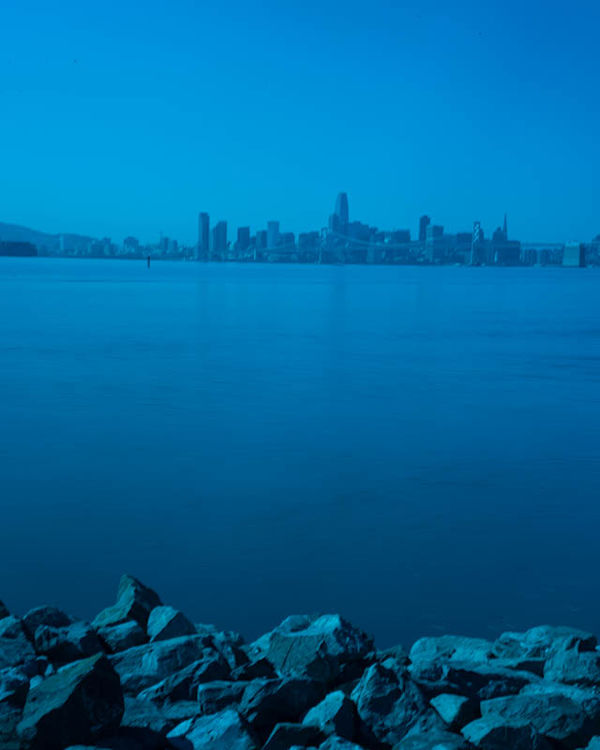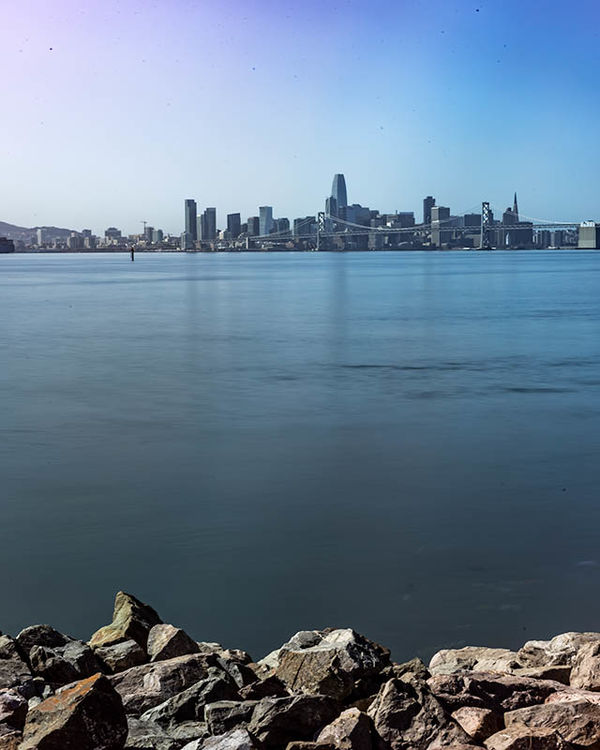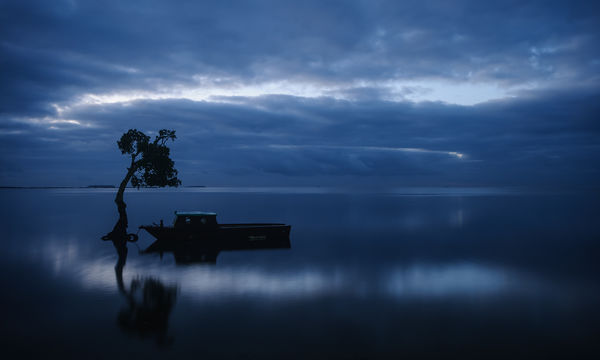Help with long exposure continued
Feb 26, 2021 20:20:13 #
deayala1
Loc: Pleasanton, CA
Sorry, here are the 2 remaining shots. nI'll repost the 1st shot too.
#1 1/5 sec @ f22, iso 100, 62mm, tripod, some pp
#2 5 sec @ f22, iso 100, 62mm, tripod
#3 5 sec @ f22, iso 100, 62mm, tripod. with some pp
#1 1/5 sec @ f22, iso 100, 62mm, tripod, some pp
#2 5 sec @ f22, iso 100, 62mm, tripod
#3 5 sec @ f22, iso 100, 62mm, tripod. with some pp
Feb 26, 2021 20:45:48 #
You've stored only the first attachment of the three images. What type of help are you looking for?
Initial comments:
1) By reducing your 24MP files from your D750 to 640x800 pixels, we really can't see any of the original details. Consider using a size of 2048px on the long side of the image.
2) Using f/22 is more likely to give you a soft image than a sharply focused image. Consider nothing smaller than f/13 and adjust your exposure as needed.
3) Using 1/5 sec with objects / subjects moving in your image will likely ruin the image, like the movement of the sailboat in the first attachment. Water and carlights are a different type of long-exposure than slowish moving boats. Note the 5-second results are much smoother.
4) The small f/22 aperture has also exposed a good deal of sensor dust in the sky. Consider cloning all this debris away as well as cleaning your camera sensor. The cloning tool in LR is very efficient for clicking through / over all these specs to remove.
Initial comments:
1) By reducing your 24MP files from your D750 to 640x800 pixels, we really can't see any of the original details. Consider using a size of 2048px on the long side of the image.
2) Using f/22 is more likely to give you a soft image than a sharply focused image. Consider nothing smaller than f/13 and adjust your exposure as needed.
3) Using 1/5 sec with objects / subjects moving in your image will likely ruin the image, like the movement of the sailboat in the first attachment. Water and carlights are a different type of long-exposure than slowish moving boats. Note the 5-second results are much smoother.
4) The small f/22 aperture has also exposed a good deal of sensor dust in the sky. Consider cloning all this debris away as well as cleaning your camera sensor. The cloning tool in LR is very efficient for clicking through / over all these specs to remove.
Feb 26, 2021 20:57:51 #
In addition to Paul's above post:
1) ND filters will add some degree of color cast. Some brands/filters are better than others and requires plenty of research to find what you desire. I've never researched that specific variable ND filter, but that second shot is pretty extreme.
2) The third shot appears to be victim of a bad angle from the sun and I'm only guessing here, but the light didn't interact very well between the two polarizers.
1) ND filters will add some degree of color cast. Some brands/filters are better than others and requires plenty of research to find what you desire. I've never researched that specific variable ND filter, but that second shot is pretty extreme.
2) The third shot appears to be victim of a bad angle from the sun and I'm only guessing here, but the light didn't interact very well between the two polarizers.
Feb 26, 2021 21:09:12 #
deayala1
Loc: Pleasanton, CA
CHG_CANON wrote:
You've stored only the first attachment of the thr... (show quote)
I did resize the images on a second posting. I appreciate your comments but I am looking to improve in smoothing out the water.
Feb 26, 2021 21:10:25 #
deayala1
Loc: Pleasanton, CA
johngault007 wrote:
In addition to Paul's above post:
1) ND filters will add some degree of color cast. Some brands/filters are better than others and requires plenty of research to find what you desire. I've never researched that specific variable ND filter, but that second shot is pretty extreme.
2) The third shot appears to be victim of a bad angle from the sun and I'm only guessing here, but the light didn't interact very well between the two polarizers.
1) ND filters will add some degree of color cast. Some brands/filters are better than others and requires plenty of research to find what you desire. I've never researched that specific variable ND filter, but that second shot is pretty extreme.
2) The third shot appears to be victim of a bad angle from the sun and I'm only guessing here, but the light didn't interact very well between the two polarizers.
The sun was at 90 degrees to my camera. Thanks
Feb 26, 2021 21:15:32 #
deayala1 wrote:
I did resize the images on a second posting. I appreciate your comments but I am looking to improve in smoothing out the water.
You need to store the attachments (files) for anyone to access the details.
Regarding smoothing the water, longer is better. You can see the difference even from the thumbnails of 1/5 sec vs 5 seconds. Rather than small apertures, use ND filters. Try a 4- or 6-stop screw-in filter.
Feb 27, 2021 00:52:16 #
johngault007 wrote:
In addition to Paul's above post:
1) ND filters will add some degree of color cast. Some brands/filters are better than others and requires plenty of research to find what you desire. I've never researched that specific variable ND filter, but that second shot is pretty extreme.
2) The third shot appears to be victim of a bad angle from the sun and I'm only guessing here, but the light didn't interact very well between the two polarizers.
1) ND filters will add some degree of color cast. Some brands/filters are better than others and requires plenty of research to find what you desire. I've never researched that specific variable ND filter, but that second shot is pretty extreme.
2) The third shot appears to be victim of a bad angle from the sun and I'm only guessing here, but the light didn't interact very well between the two polarizers.
Cheap ND filters will add color cast. Lee, NISI, and other higher-end filters have optical coatings that prevent color casts.
To the OP: install the Lee Big Stopper app on your Smartphone. It is set up for 6, 10 nd 16 stop ND filters. Very easy to use.
Feb 27, 2021 01:03:50 #
rgrenaderphoto wrote:
Cheap ND filters will add color cast. Lee, NISI, and other higher-end filters have optical coatings that prevent color casts.
To the OP: install the Lee Big Stopper app on your Smartphone. It is set up for 6, 10 nd 16 stop ND filters. Very easy to use.
To the OP: install the Lee Big Stopper app on your Smartphone. It is set up for 6, 10 nd 16 stop ND filters. Very easy to use.
??
I think you quoted the wrong post....Cheers!
Feb 27, 2021 01:40:21 #
deayala1 wrote:
............................ but I am looking to improve in smoothing out the water.
It really depends upon what you define as "improve" smoothing out of the water. Longer exposure will smooth it more, but other objects in the scene may determine limitations on the length of exposure.
As an example, if nothing other than the water and clouds in a scene are moving, length of exposure can be anything YOU like.
If you then add a boat at anchor or a tree the following come into play;
- Wind causing movement of foliage,
- Wind, tide and swell causing movement of the boat,
With practice and planning you will get to know what can be achieved and when.
As an example, tide height, tide state, time of day and weather all worked in my favor to achieve this 8 sec exposure.
Feb 27, 2021 08:08:34 #
Understanding hyper focal distance may help you achieve the depth of field that you are seeking with using very small aperture settings.
Feb 27, 2021 10:16:06 #
deayala1 wrote:
I did resize the images on a second posting. I appreciate your comments but I am looking to improve in smoothing out the water.
You’ll need to shoot longer than 5 seconds. Try using a darker ND filter so you can extend the exposure time.
Feb 28, 2021 01:18:05 #
amfoto1
Loc: San Jose, Calif. USA
I agree, you need longer than 5 sec exposure... plus you need to avoid using f/22.
The only way those things can happen at 100 ISO is if you use a neutral density filter.
There are Variable ND filters... but they have problems. For one, good ones are expensive. Even cheap ones are pretty expensive, and they cause all sorts of problems... uneven exposure across your image... a large X shape that's difficult to fix in post processing... plus color shifts. Even the expensive ones aren't entirely free of problems.
Since you're shooting stills, instead I'd recommend you just get a couple fixed strength ND filters: perhaps a 3- or 4-stop and a 6-stop. A 3-stop would have allowed you to back off to f/16 or, even better, f/11 and still use a 10 second exposure. Not enough? Use the 6-stop instead... that would allow f/11 and up to 160 second exposure (boost your ISO if that's too slow a shutter speed). Or maybe sometime you want an even longer exposure... simply stack the filters and use both for 9 or 10 stops. With still photos, there's enough adjustability in the available exposure settings that a couple fixed strength ND filters can pretty much cover all your needs. (Someone shooting video might prefer a Variable ND because they don't have as much exposure adjustability to work with.)
Another filter that can useful sometimes in combination with an ND is a Circular Polarizer. Those can reduce as much as 2 or more stops of light, at their strongest settings. (The new "high transmissive type reduce less light, so for this purpose the "old style" of C-Pol might be better.) However, for all the images shown here, with water and reflections, I might not use a C-Pol because that would also reduce or remove the reflections, which are important aspects of the images.
One way that a Variable ND can be handy for still photography is that it can dialed to it's weak setting for focusing and composition, then easily dialed back to the stronger setting you wanted to use for the exposure (but was too dark to see to compose and focus... causing auto focus to fail and making manual focus difficult). However, if you are willing to use Live View with exposure simulation or exposure preview, and focus manually, you may be able to avoid these problems. Alternatively, remove the filter temporarily to compose and focus, then carefully install the filter. Some people get a magnetic filter system to facilitate this. (Unless a really strong ND filter is being used, it's usually not a problem for mirrorless cameras, since they automatically show exposure previews and most can autofocus at light levels considerably lower than DSLRs.)
Oh, and the reason to avoid f/22 is because at ultra small lens apertures an optical effect called "diffraction" occurs, robbing fine detail from your images. Ideal would be f/8, but a 24MP full frame camera should be fine at f/11. f/16 will cause some diffraction, but might be okay, too. But any smaller than that the diffraction is going to be pretty strong. I recommend you do a series of test shots of a highly detailed target and compare them, to see the effects of diffraction and decide for yourself how much of it is acceptable in your image. If you have trouble getting sufficient depth of field using the larger aperture, you might be able to take two or more images focused to different distances, then "focus stack" them into a single image. (A popular technique for macro shots, but also applicable for other types of photography.)
The only way those things can happen at 100 ISO is if you use a neutral density filter.
There are Variable ND filters... but they have problems. For one, good ones are expensive. Even cheap ones are pretty expensive, and they cause all sorts of problems... uneven exposure across your image... a large X shape that's difficult to fix in post processing... plus color shifts. Even the expensive ones aren't entirely free of problems.
Since you're shooting stills, instead I'd recommend you just get a couple fixed strength ND filters: perhaps a 3- or 4-stop and a 6-stop. A 3-stop would have allowed you to back off to f/16 or, even better, f/11 and still use a 10 second exposure. Not enough? Use the 6-stop instead... that would allow f/11 and up to 160 second exposure (boost your ISO if that's too slow a shutter speed). Or maybe sometime you want an even longer exposure... simply stack the filters and use both for 9 or 10 stops. With still photos, there's enough adjustability in the available exposure settings that a couple fixed strength ND filters can pretty much cover all your needs. (Someone shooting video might prefer a Variable ND because they don't have as much exposure adjustability to work with.)
Another filter that can useful sometimes in combination with an ND is a Circular Polarizer. Those can reduce as much as 2 or more stops of light, at their strongest settings. (The new "high transmissive type reduce less light, so for this purpose the "old style" of C-Pol might be better.) However, for all the images shown here, with water and reflections, I might not use a C-Pol because that would also reduce or remove the reflections, which are important aspects of the images.
One way that a Variable ND can be handy for still photography is that it can dialed to it's weak setting for focusing and composition, then easily dialed back to the stronger setting you wanted to use for the exposure (but was too dark to see to compose and focus... causing auto focus to fail and making manual focus difficult). However, if you are willing to use Live View with exposure simulation or exposure preview, and focus manually, you may be able to avoid these problems. Alternatively, remove the filter temporarily to compose and focus, then carefully install the filter. Some people get a magnetic filter system to facilitate this. (Unless a really strong ND filter is being used, it's usually not a problem for mirrorless cameras, since they automatically show exposure previews and most can autofocus at light levels considerably lower than DSLRs.)
Oh, and the reason to avoid f/22 is because at ultra small lens apertures an optical effect called "diffraction" occurs, robbing fine detail from your images. Ideal would be f/8, but a 24MP full frame camera should be fine at f/11. f/16 will cause some diffraction, but might be okay, too. But any smaller than that the diffraction is going to be pretty strong. I recommend you do a series of test shots of a highly detailed target and compare them, to see the effects of diffraction and decide for yourself how much of it is acceptable in your image. If you have trouble getting sufficient depth of field using the larger aperture, you might be able to take two or more images focused to different distances, then "focus stack" them into a single image. (A popular technique for macro shots, but also applicable for other types of photography.)
Feb 28, 2021 12:12:25 #
If you want to reply, then register here. Registration is free and your account is created instantly, so you can post right away.







